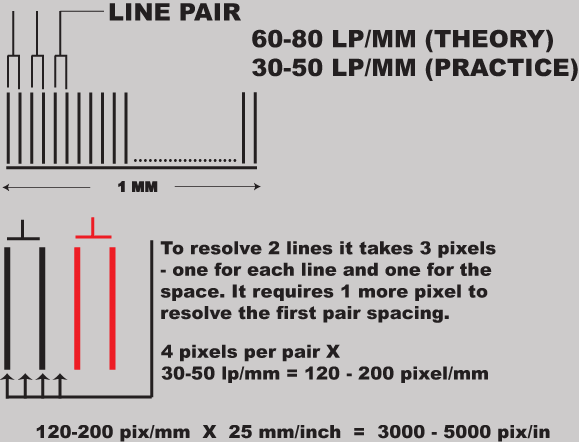|
Measuring Film Resolution
|

35mm = 1.5 inch x 1 inch
Then using 3000-5000 pixels per inch
4500 x 3000 pixels for 3000 dpi
7500 x 5000 pixels for 5000 dpi
4500x3000 = 13.5 Megapixels
7500x5000 = 37.5 Megapixels
Cameras today = 10 mp - 13.5 mp
Film Scanners easily reach 4800 dpi
***(THEORY): your lens was not designed and built as part of a NASA or NSF project, and your gyroscopic stabilization is not as good as the latest spy satellites!
That being said, film is still higher resoltuion today than the vast majority of digital cameras on the market, but the digital cameras continue to close the gap every year. The "cost" of digital imaging and the ease of "processing" the images has put film on the down and out road for the average consumer. It will continue for a bit longer for special needs, but digital is taking over.
Like it or not, we need to understand the trade-offs, to get the best results from digital imaging.